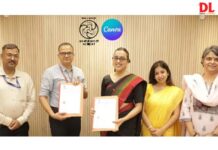Mobile communications is now more than just voice and text. From technology innovations, to communities, it has marched a long road to take the centre stage. Nokia today not only leads in mobile technologies and services connecting people in a fast pace, it has also made its technologies available for education. Digital Learning explores Nokia’s revolutions in the mobile communications industry by taking a look at its present actions and how it has always been challenging the future.
Simo Hoikka is Programme Manager at Nokia Corporate Relations and Responsibility. He currently manages the Bridgeit project in the Philippines, a global programme designed to deliver digital education materials to schools using mobile technology. Prior to this assignment he held various positions within Nokia in sales and marketing as well as General Manager of Nokia subsidiaries.
? What kind of innovations is Nokia supporting and initiating to bridge the digital divide, enhance communities’ access to affordable technology, and use technology for development? What are the challenges in such sustaining such innovations?
We at Nokia want to give people the power to communicate. This is the single biggest contribution we can make to bridge the digital divide at this time. But, it means addressing issues other than the cost of a phone like taxes, service costs, and competition. Together with operators, we can give people this power, and we are working on each of these angles.
We also care about social innovation, and the kind of initiatives that naked technology cannot solve without the cooperation of governments and social service providers. For example, in the Philippines, teachers in remote areas can send an SMS and receive cutting-edge educational materials
Is the company engaged in preparing young people to embrace opportunities and possibilities created by the global economy and new technological advancements?
Yes, we are. The means of preparation from country to country can be somewhat different, but we’re trying to find the most appropriate way. In South
America, for example, we mix IT education with “life skills” training and internships. It means that the students graduate not only with hard skills, but soft skills and practical experience as well. We have quite a few projects like these from country to country, and we are very optimistic about the potential of mobile communications in education.
Can you elaborate on how Nokia has contributed to youth and education causes? How does Nokia aim to expand the education opportunities for young people?
Focusing on youth and education is a natural fit for Nokia as they strongly tie into Nokia’s core values, renewal and respect. Within education there are two aspects: access to education and quality of education. We can help to improve both with mobile phones. When the physical presence of a teacher is no longer needed, it is possible to deliver education to more people. But, we also need to make sure that quality is not compromised. We want children to receive a genuine education, not gimmicks and we are just one of many organizations thatare working together in this area. Nokia has a global youth development initiative working together with the International Youth Foundation and Plan, which has been active in more than 30 countries, benefiting more than 300,000 young people. The programmes are built to meet the local needs in the countries in which they are running but have a focus on improving young people’s life skills such as self-confidence, creative thinking, respect and conflict management. One of such activities, the Bridgeit – programme, was developed through a unique multi-sector collaboration between Nokia, International Youth Foundation, Pearson and United Nations Development Programme (UNDP). Bridgeit has provided quality educational material focused
on math, science and English already for more than 700,000 students in more than 200 schools in the Philippines. With our local programme partners we are committed to scale the programme to cover an additional minimum 400 schools during the next 2 – 3 years. This programme has gained international interest and currently we are studying different opportunities in Asia, sub-Saharan Africa and Latin America for replication.
Do you believe m-learning can open new learning opportunities for people? Can a handset be really turned into an educational tool?
Many educational tools can be adapted from computers to phones and if we look to phones delivering Internet access, the educational possibilities start to expand. Almost any kind of e-learning can be replicated on a phone, so m-learning offers great potential. The University of the Philippines National Institute for Science and Mathematics Education Development conducted a study on the Bridgeit programme which utilises several different technologies like mobile telephony, satellite TV and fixed line broad band connectivity for ordering and delivering educational content to the classrooms. The study showed significant improvement in students’ performance and more positiveattitudes toward science and technology. It also showed improvement in teachers’ competence and attitude toward using echnology in teaching. The project also inspired and motivated school officials, parents and community leaders






















